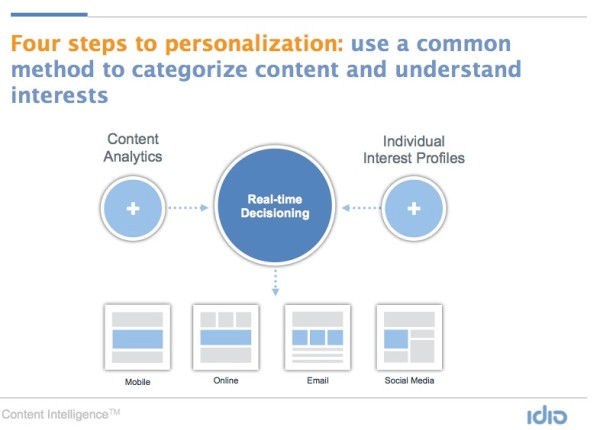The Case For Content Automation
- Fahad H

- Mar 24, 2014
- 4 min read
Recently, the Interactive Advertising Bureau (IAB) said it’s developing metrics and definitions for what used to be an intangible concept: engagement. It reminds me of the not too distant past when the once-intangible concept of marketing got the same scrutiny. Gone are the days when you knew half of your advertising worked, but not which half.
We wanted accountability and consistency. The result was marketing automation, and you don’t have to go far into the inbox or the RSS feed to find someone singing the praises of marketing automation. It unifies sales and marketing. It uncovers and values business leads. It adds discipline and consistency to client and customer relationships. All good. Now for the next level.
Automating Consumer Engagement?
The IAB is, in a sense, trying to automate consumer engagement. At the next level is content automation. Like marketing automation before it, content automation is about to take center stage. It’s a new concept, and, like marketing automation in its early days, admittedly hard to imagine.

We don’t think of content as something that can be automated. But it can be and must be.
Organizing Content Produced At Scale
In my most recent round of meetings with companies huge and not so huge, I continued to be struck by how difficult it can be to truly understand and organize all the content a company produces.
This problem is not getting easier as publishers and content marketers explore more efficient ways to produce even more content at an increasing rate. Sounds a lot like the days when marketing and sales budgets were out of control and they were fighting when they should have been singing from the same hymnbook, so to speak.
Content automation extends from the developing fields of semantic analysis and natural language processing.
Basically, these technologies make it possible to read and organize each individual piece of content in an automated way that’s standardized (so there aren’t subjective differences in categorization) and reusable (so publishers can easily call up the best piece of content for other purposes).

But, I don’t want to get too far into the gears of it here. What I do need to call out is the business case for content automation.
We see three key areas to make that case: the evolution of marketing automation, the voice of the company and sheer scale issues.
The Evolution Of Marketing Automation
Before the concept of marketing automation took hold, it seemed like a contrary concept. Marketing is all about the relationships you can create and results you can measure from customers.
You can’t automate relationships. You can, however, do a more efficient job of automating the potential of customers and leads for more valuable customers, coordinating your sales and marketing efforts.
That’s why marketing automation has grown at a 50 percent clip over the past two years. As content marketing parallels the growth rate of marketing automation, its extension into content is inevitable.
The Voice Of The Company
According to Gartner, by 2020, customers will manage 85% of their relationships without talking to a human (pdf). In some ways, managing a relationship without talking to the customer is kind of like saying Turbo Tax will solve your tax problems.
All Turbo Tax does is make the process easier and automated. It’s the taxpayer who makes it work. Of course, you have to talk to customers. Enter content marketing. That’s how companies talk to their customers as we race toward that world of minimal human interaction.
Content is an asset and, like every asset in the digital age, it will need to be automated. Content automation, which will standardize the most relevant and engaging content, will have to evolve if it is to be effective with that next wave of “talking” to customers.
And it is happening as BtoB and BtoC companies continue to look for more value from the content efforts that they’re growing at exponential rates.
Sheer Scale Issues
It is almost impossible to gauge the increase in the amount of content an average company produced ten years ago to what needs to be generated today. Before the digital age, companies published whatever they wanted and let it fade on the newsstand or in the mailroom.
Content used to be a “fire and forget” type of model. Now, content lives on long after it’s first published in the form of syndication, republishing, direct access via search, licensed bundles, “how to” guides, etc.
Archived content can be repurposed. And, social media and brand ambassadors have taken content scale into new areas of size and importance. Knowing the content that has worked is a window into what will work in the future. But, given the sheer volume of content and customers, a manual approach to determining that engagement factor is no longer an option.
Don’t Ignore Content Automation
There are other compelling reasons to urgently consider content automation. The above three are at the top of the list because they present a problem for your entire marketing effort if they are ignored.
In a word, it’s about value. Your company undoubtedly has unleashed a vast amount of content. Ask yourself what it’s worth. Then ask yourself how it can be worth more.







![Don’t call me: Nearly 90% of customers won’t answer the phone anymore [Study]](https://static.wixstatic.com/media/958f14_66a5fe00e2bd470487378904799710f6~mv2.jpg/v1/fill/w_980,h_551,al_c,q_85,usm_0.66_1.00_0.01,enc_avif,quality_auto/958f14_66a5fe00e2bd470487378904799710f6~mv2.jpg)
Comments